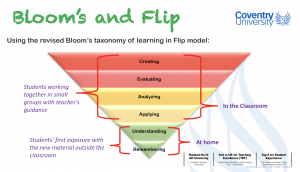An active learning method I find useful for initial assessment involves asking a student to recall what they remember from the previous session / lecture (to randomise and actually add an element of fun I use wheeldecide.com – all of the student’s names are put on the wheel and it randomly selects someone to start the discussion – This is also a great way for helping to remember student names and faces at the beginning of a course) I also use the same method at the end of the session / lecture whereby a student will be randomly selected and asked to summarise what has been covered during the session. The random selection encourages all learners to remain alert whilst also ensuring no one feels individually picked on
I have used Kahoot a few times but I also encountered technical issues with students unable to log on and this has made me a bit hesitant to revisit it! However, the technical issues helped me to realise the importance of always having a Plan B in case things go wrong!!
Another active learning option which I have used quite often and has never stopped students from attending is a game I know as ‘Popcorn’ – As a teacher I ask one student a question – Once the question has been answered, that student then ‘pops’ it over and selects another student to answer the next question. This method is quite empowering for the students to lead and direct the dialogue themselves – It seems much less intimidating if it is a fellow student choosing who speaks next
Thoughts on Flipped Learning:
My experience / belief in Flipped Learning is that it is good in theory, but problematic in practice.
For it to work, I think it must be embedded at the very start – New cohort, Day 1, Year 1. There needs to be a cultural shift with all faculty teaching staff on board. From the video I do like the idea of the structure which has been put forward – What do I need to know? What do I need to do? What is the activity? With careful planning I can see it working but not starting midway through a semester or academic year.
When considering using Flipped Learning it is important to think about cognitive activity – Link to:
Bloom Taxonomy (1956) – Knowledge / Comprehension / Application / Analysis /Synthesis / Evaluation
Anderson et al (2001) – Remembering / Understanding / Applying / Analysing / Evaluating / Creating
- What students can do comfortably (green)
- What students can learn with guidance (Amber)
- What is beyond student’s ability (Red)
3 phases of Flipped Learning
- Before – Prepare to participate in class activities
- During – More hands-on activities and problem based learning environment / Practice and applying key concepts with feedback – may include: Short video (3-5 mins) or 1 sheet of information
- After – Offering guide and support for further studies and the next classroom – Check understanding and extend learning
Must be a lot of connected and linked activities to the session – If they don’t see the connection they won’t see the point in doing the exercise
Thoughts on Enquiry Based Learning:
Applying a theoretical framework – I think enquiry-based learning seems to include elements of Action Research – Plan/Act/Observe/Reflect (Kemmis & McTaggart), Learning Cycle – Experience/Reflection/Conceptualisation/Experimentation (Kolb), Discovery Learning (Jerome Bruner) and includes the seven factors which underpin successful learning – Learning by doing / Learning from feedback / Wanting to learn / Needing to learn / Making sense / Coaching / Assessing (Race). It also develops soft skills (as mentioned in the video)
I really think this is a great way to learn – It can also be adapted and differentiated to suit the level and learning style whereby the level of enquiry can be either structured, guided, or open. I think enquiry-based learning is great and I look forward to exploring it further.
Thoughts on Playful Learning:
I think learning through play can really help break down barriers and open communication – I’ve experienced Lego sessions with the DMLL and it’s great to see initially reserved participants all creatively collaborating, using imagination and having fun – The actual ‘learning’ seems secondary to the activity, but actually the play process has really helped develop ideas and lateral thinking.
I have used games such as ‘snakes and ladders’ and ‘dominos’ within revision exercises and those sessions have always been enjoyable and engaged the students.
